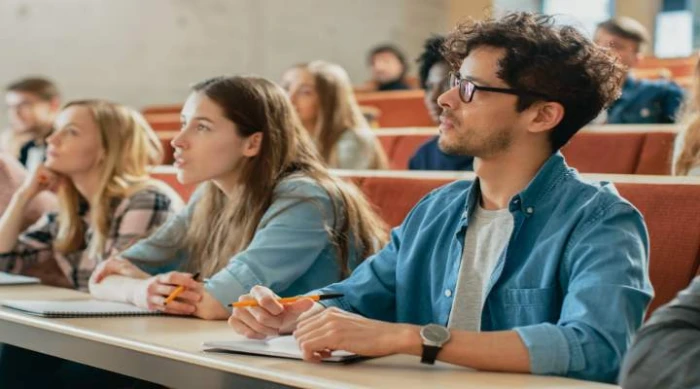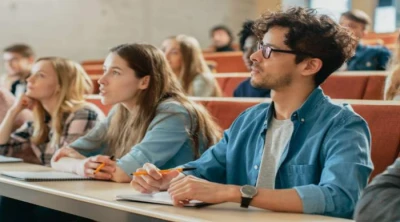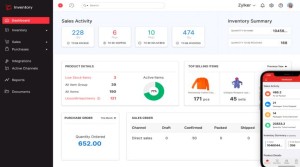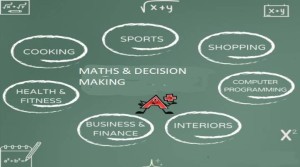10 Ways that Lead to Active Studying
In today's world with so much information, it's important to know how to learn well.

In today's world with so much information, it's important to know how to learn well. Just re-reading or highlighting text without thinking doesn't help you remember things and can be frustrating. Active studying, where you really engage with what you're learning, helps you to understand and remember better.
10 Ways that Lead to Active Studying
Here are 10 ways that can make a way for you to active studying. What you have to do is that you need to pick the important aspects from the given ones and implement them to get the pave the paths to good grades.
1. Self Testing
It means checking what you've learned regularly. You can do this using flashcards, practice quizzes, or by trying to remember and say the information out loud. This way, you use the testing effect, which helps you to remember things for a long time by making your brain recall the information.
2. Distributed Practice
Spaced repitition, also called distributed practice, means studying a little bit over a longer period instead of all at once. Studies show that this helps you to remember things better because it gives your brain time to store the information.
3. Interleaved Practice
It means studying different topics or subjects in one session. Instead of studying one thing for a long time, you switch between different topics. This helps you to get better at solving problems and makes learning easier because your brain has to keep remembering different information.
4. Elaborative Interrogation
This technique involves asking "why" questions about your study material. By explaining why specific facts or concepts are actual, you create more connections in your brain, which aids in understanding and memory.
5. Summarization
Writing summaries of what you have learned helps reinforce the material. Summarization requires processing and condensing information, enhancing comprehension and retention.
6. Mind Mapping
Creating visual representations of information, such as mind maps, helps organize and integrate knowledge. Mind maps can highlight relationships between concepts and aid in visual learning.
7. Teaching Others
When you explain things to someone, it helps you remember better. Teaching makes you put your thoughts in order and understand them better. This can show you where you might not understand something completely.
8. Application of Concepts
Using what you know to solve real-life problems or situations makes you understand things better. You might solve problems, do experiments, or use theories in real-life situations to learn more.
9. Active Note Taking
Taking active notes means writing down information by using your own words. It's about summarizing important points and arranging them in an organized way. This helps you to understand the material better instead of just copying it word to word.
10. Metacognitive Study Strategies
Metacognition means thinking about what you want to achieve. It includes the following.
- Figuring out how to start your learning tasks.
- Checking if you understand what you're learning.
- Deciding if your way of studying is working well.
Thinking about how you learn can help you develop better study habits.
Also, read that how you can finance your education in Germany?
Some Important Tips for Active Studying
Taking full advantage of the study time by actively studying is very important. Active studying is an approach where learners engage actively with the material they are trying to learn rather than passively absorbing information. It involves techniques such as asking questions, summarizing information, and making connections between concepts. Therefore, we listed here some important tips that you can read and implement to become more productive in studies.
Active Studying Strategies
These are specific methods or techniques that learners use to engage actively with the material they are studying. Examples include - spaced repitition, self testing, teaching the material to someone else, and using mnemonic devices.
Active Listening Study
Active listening when studying means paying close attention, understanding, reacting, and remembering what is being said or taught. It's about being fully involved in listening instead of just hearing the information without really paying attention.
Active Learning Study
Active learning involves any activity in which the learner is actively acquiring knowledge or skills. This could include discussions, problem solving activities, group projects, or hands-on experiments.
Active Note Taking Strategies
These are methods to help you take in and organize information when you are in class, reading, or learning in other ways. For example, you can use short forms of words, draw pictures, sum up important ideas, and make notes on the text.
Habits Devlop Active Studying
These habits help you get involved with what you're learning. They include setting clear study goals, making a good place to study, using your time well, and going over what you've learned often.
Method of Study
A study method is a way to learn and remember things better. Different methods work for different people. It is important to find the ways that suit your learning style.
Bad Learning Habits
These are the things people do that make it hard to learn and remember information. Examples are waiting until the last minute to study, trying to learn everything quickly, studying without really thinking, getting distracted while studying, and not asking for help when needed.
Efficient Methods of Learning
There are some ways to make studying more effective and easier. These methods help you learn and remember things better; some of the methods are given below.
-
Spaced Repitition
Reviewing information at increasing intervals over time.
-
Interleaved Practice
Mixing different topics or skills during study sessions.
-
Active Recall
Testing you on the material instead of just reading it.
-
Chunking
Breaking down complex information into smaller, more manageable parts.
Engaging in active learning involves more than just passively listening to what you are being taught. Research shows that when you engage more deeply with information, you understand it better and remember it longer. Methods like testing yourself, spreading out your study sessions, and teaching others use techniques that help your brain remember things more effectively. Using these methods can make your study time more efficient, help you do better in school, and build skills that are useful for learning throughout your life.

In today's world with so much information, it's important to know how to learn well. Just re-reading or highlighting text without thinking doesn't help you remember things and can be frustrating. Active studying, where you really engage with what you're learning, helps you to understand and remember better.
10 Ways that Lead to Active Studying
Here are 10 ways that can make a way for you to active studying. What you have to do is that you need to pick the important aspects from the given ones and implement them to get the pave the paths to good grades.
1. Self Testing
It means checking what you've learned regularly. You can do this using flashcards, practice quizzes, or by trying to remember and say the information out loud. This way, you use the testing effect, which helps you to remember things for a long time by making your brain recall the information.
2. Distributed Practice
Spaced repitition, also called distributed practice, means studying a little bit over a longer period instead of all at once. Studies show that this helps you to remember things better because it gives your brain time to store the information.
3. Interleaved Practice
It means studying different topics or subjects in one session. Instead of studying one thing for a long time, you switch between different topics. This helps you to get better at solving problems and makes learning easier because your brain has to keep remembering different information.
4. Elaborative Interrogation
This technique involves asking "why" questions about your study material. By explaining why specific facts or concepts are actual, you create more connections in your brain, which aids in understanding and memory.
5. Summarization
Writing summaries of what you have learned helps reinforce the material. Summarization requires processing and condensing information, enhancing comprehension and retention.
6. Mind Mapping
Creating visual representations of information, such as mind maps, helps organize and integrate knowledge. Mind maps can highlight relationships between concepts and aid in visual learning.
7. Teaching Others
When you explain things to someone, it helps you remember better. Teaching makes you put your thoughts in order and understand them better. This can show you where you might not understand something completely.
8. Application of Concepts
Using what you know to solve real-life problems or situations makes you understand things better. You might solve problems, do experiments, or use theories in real-life situations to learn more.
9. Active Note Taking
Taking active notes means writing down information by using your own words. It's about summarizing important points and arranging them in an organized way. This helps you to understand the material better instead of just copying it word to word.
10. Metacognitive Study Strategies
Metacognition means thinking about what you want to achieve. It includes the following.
- Figuring out how to start your learning tasks.
- Checking if you understand what you're learning.
- Deciding if your way of studying is working well.
Thinking about how you learn can help you develop better study habits.
Also, read that how you can finance your education in Germany?
Some Important Tips for Active Studying
Taking full advantage of the study time by actively studying is very important. Active studying is an approach where learners engage actively with the material they are trying to learn rather than passively absorbing information. It involves techniques such as asking questions, summarizing information, and making connections between concepts. Therefore, we listed here some important tips that you can read and implement to become more productive in studies.
Active Studying Strategies
These are specific methods or techniques that learners use to engage actively with the material they are studying. Examples include - spaced repitition, self testing, teaching the material to someone else, and using mnemonic devices.
Active Listening Study
Active listening when studying means paying close attention, understanding, reacting, and remembering what is being said or taught. It's about being fully involved in listening instead of just hearing the information without really paying attention.
Active Learning Study
Active learning involves any activity in which the learner is actively acquiring knowledge or skills. This could include discussions, problem solving activities, group projects, or hands-on experiments.
Active Note Taking Strategies
These are methods to help you take in and organize information when you are in class, reading, or learning in other ways. For example, you can use short forms of words, draw pictures, sum up important ideas, and make notes on the text.
Habits Devlop Active Studying
These habits help you get involved with what you're learning. They include setting clear study goals, making a good place to study, using your time well, and going over what you've learned often.
Method of Study
A study method is a way to learn and remember things better. Different methods work for different people. It is important to find the ways that suit your learning style.
Bad Learning Habits
These are the things people do that make it hard to learn and remember information. Examples are waiting until the last minute to study, trying to learn everything quickly, studying without really thinking, getting distracted while studying, and not asking for help when needed.
Efficient Methods of Learning
There are some ways to make studying more effective and easier. These methods help you learn and remember things better; some of the methods are given below.
-
Spaced Repitition
Reviewing information at increasing intervals over time.
-
Interleaved Practice
Mixing different topics or skills during study sessions.
-
Active Recall
Testing you on the material instead of just reading it.
-
Chunking
Breaking down complex information into smaller, more manageable parts.
Engaging in active learning involves more than just passively listening to what you are being taught. Research shows that when you engage more deeply with information, you understand it better and remember it longer. Methods like testing yourself, spreading out your study sessions, and teaching others use techniques that help your brain remember things more effectively. Using these methods can make your study time more efficient, help you do better in school, and build skills that are useful for learning throughout your life.
Conversation
Latest Blogs
© Blog CoolCalculator, Explore CoolCalculator, your destination for the latest insights, tips, and updates on the world of online calculators. Stay informed and make your calculations smarter with our blog. ,
Designed
by Saad Media Team , Team Lead M.Rizwan Akhtar












